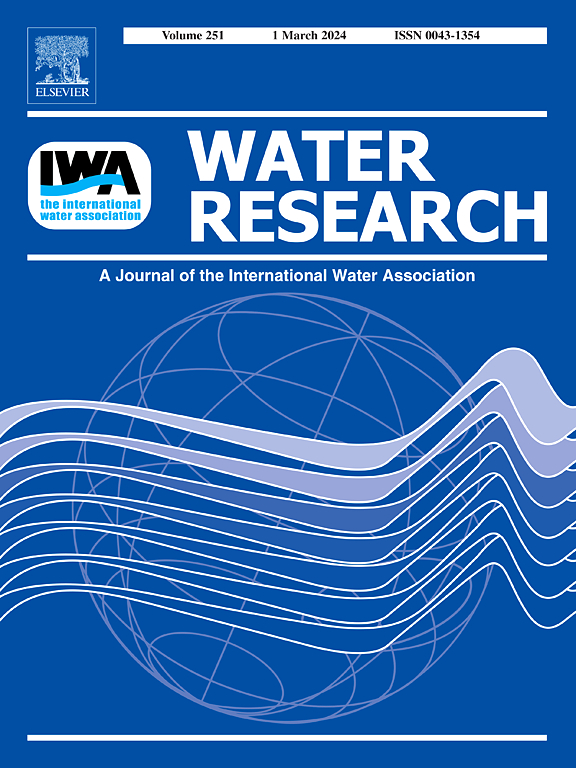Explainable machine learning models enhance prediction of PFAS bioactivity using quantitative molecular surface analysis-derived representation
IF 12.4
1区 环境科学与生态学
Q1 ENGINEERING, ENVIRONMENTAL
引用次数: 0
Abstract
The extensive use of per- and polyfluoroalkyl substances (PFAS) in industrial and consumer products poses health risks due to their toxicity. Computational toxicology approaches, particularly quantitative structure-activity relationship (QSAR) models are essential for predicting PFAS bioactivity. However, established QSAR models including machine learning-based ones with traditional molecular descriptors such as constitutional, topological, and geometric descriptors, have limited predictive capability and interpretability. Herein, we proposed a novel machine learning approach that leverages quantitative molecular surface analysis (QMSA) of molecular electrostatic potential. Using QMSA descriptors, five machine learning models (e.g., random forest) achieved outstanding performance, with best accuracy of 0.950 ± 0.017, AUC-ROC of 0.938 ± 0.012, F1-score of 0.734 ± 0.024, and MCC of 0.684 ± 0.111 for five targets (tyrosyl-DNA phosphodiesterase 1 in the absence/presence of camptothecin, ATXN2 protein, transcription factor SMAD3, and transcription factor NRF2), which outperform previously reported models. SHAP analyses revealed that estimated density, molecular volume, positive surface area, and nonpolar surface area were the most important descriptors. These descriptors were deeply involved in PFAS binding to target proteins via non-covalent interactions as evidenced by molecular docking and molecular dynamics simulations. Our results demonstrated that QMSA descriptors-based machine learning models are capable of predicting PFAS toxicity with extraordinary performance and interpretability. This study provides a novel machine learning framework for the high-throughput and cost-effective screening of high-risk emerging PFAS in aquatic environments. By identifying the contaminants that should be prioritized for regulation and treatment among the growing number of PFAS, our work aids in water quality monitoring and risk assessment, and guides decision-making in aquatic environmental management. Furthermore, this work enhances our understanding of the molecular mechanisms involved in PFAS bioactivity.


可解释的机器学习模型使用定量分子表面分析衍生的表示来增强PFAS生物活性的预测
由于全氟烷基和多氟烷基物质的毒性,它们在工业和消费品中的广泛使用构成了健康风险。计算毒理学方法,特别是定量构效关系(QSAR)模型对于预测PFAS的生物活性至关重要。然而,已建立的QSAR模型(包括基于机器学习的传统分子描述符,如结构、拓扑和几何描述符)的预测能力和可解释性有限。在此,我们提出了一种新的机器学习方法,利用分子静电势的定量分子表面分析(QMSA)。使用QMSA描述子,5个机器学习模型(如随机森林)取得了出色的表现,其中5个靶点(喜树碱、ATXN2蛋白、转录因子SMAD3和转录因子NRF2缺失时的酪氨酸- dna磷酸二酯酶1)的最佳准确率为0.950±0.017,AUC-ROC为0.938±0.012,f1得分为0.734±0.024,MCC为0.684±0.111,优于先前报道的模型。SHAP分析显示,估计密度、分子体积、正表面积和非极性表面积是最重要的描述符。分子对接和分子动力学模拟证明,这些描述子通过非共价相互作用深入参与了PFAS与靶蛋白的结合。我们的研究结果表明,基于QMSA描述符的机器学习模型能够以非凡的性能和可解释性预测PFAS毒性。本研究为水生环境中高风险新兴PFAS的高通量和高成本效益筛选提供了一种新的机器学习框架。通过在日益增多的PFAS中识别出需要优先调控和治理的污染物,我们的工作有助于水质监测和风险评估,指导水生环境管理决策。此外,本研究进一步加深了我们对PFAS生物活性的分子机制的理解。
本文章由计算机程序翻译,如有差异,请以英文原文为准。
求助全文
约1分钟内获得全文
求助全文
来源期刊

Water Research
环境科学-工程:环境
CiteScore
20.80
自引率
9.40%
发文量
1307
审稿时长
38 days
期刊介绍:
Water Research, along with its open access companion journal Water Research X, serves as a platform for publishing original research papers covering various aspects of the science and technology related to the anthropogenic water cycle, water quality, and its management worldwide. The audience targeted by the journal comprises biologists, chemical engineers, chemists, civil engineers, environmental engineers, limnologists, and microbiologists. The scope of the journal include:
•Treatment processes for water and wastewaters (municipal, agricultural, industrial, and on-site treatment), including resource recovery and residuals management;
•Urban hydrology including sewer systems, stormwater management, and green infrastructure;
•Drinking water treatment and distribution;
•Potable and non-potable water reuse;
•Sanitation, public health, and risk assessment;
•Anaerobic digestion, solid and hazardous waste management, including source characterization and the effects and control of leachates and gaseous emissions;
•Contaminants (chemical, microbial, anthropogenic particles such as nanoparticles or microplastics) and related water quality sensing, monitoring, fate, and assessment;
•Anthropogenic impacts on inland, tidal, coastal and urban waters, focusing on surface and ground waters, and point and non-point sources of pollution;
•Environmental restoration, linked to surface water, groundwater and groundwater remediation;
•Analysis of the interfaces between sediments and water, and between water and atmosphere, focusing specifically on anthropogenic impacts;
•Mathematical modelling, systems analysis, machine learning, and beneficial use of big data related to the anthropogenic water cycle;
•Socio-economic, policy, and regulations studies.
 求助内容:
求助内容: 应助结果提醒方式:
应助结果提醒方式:


